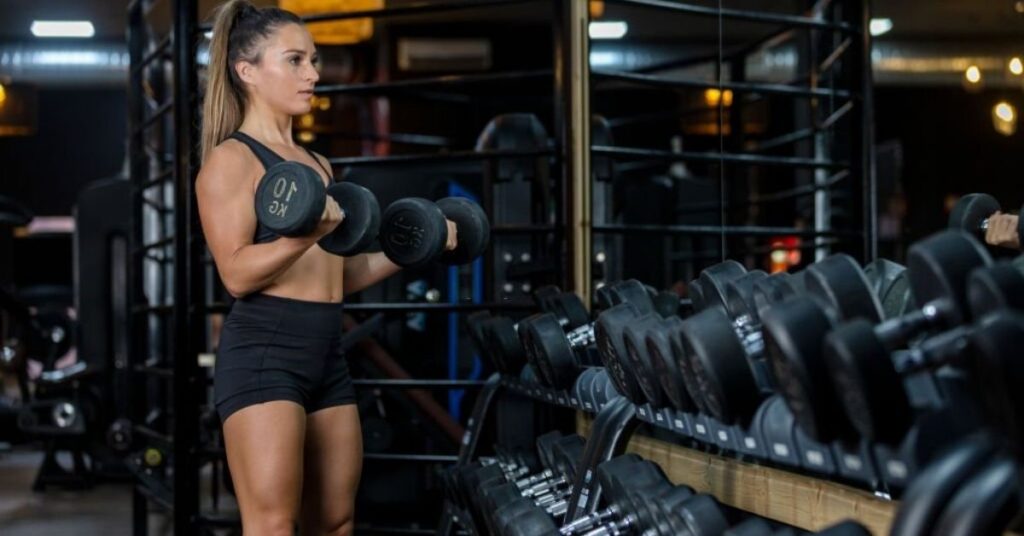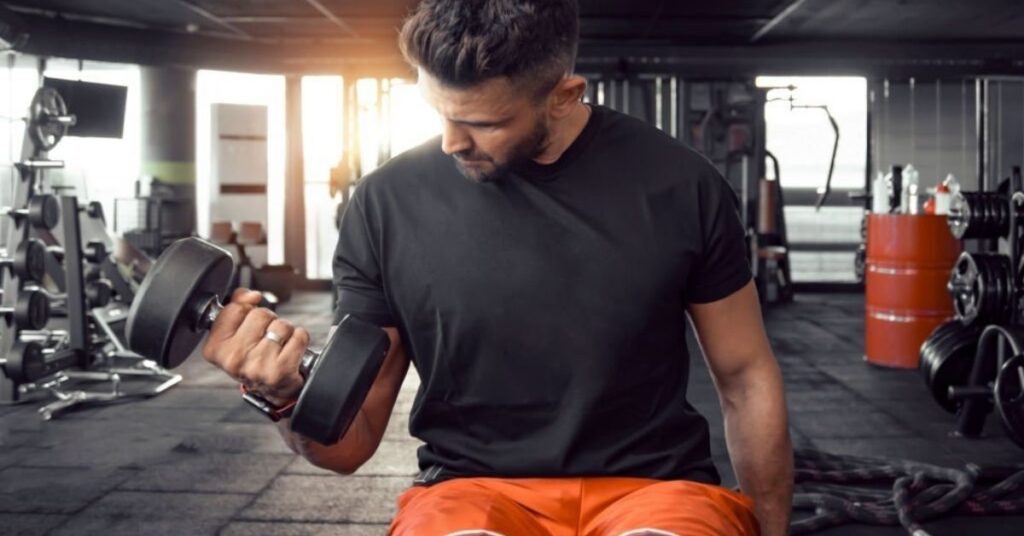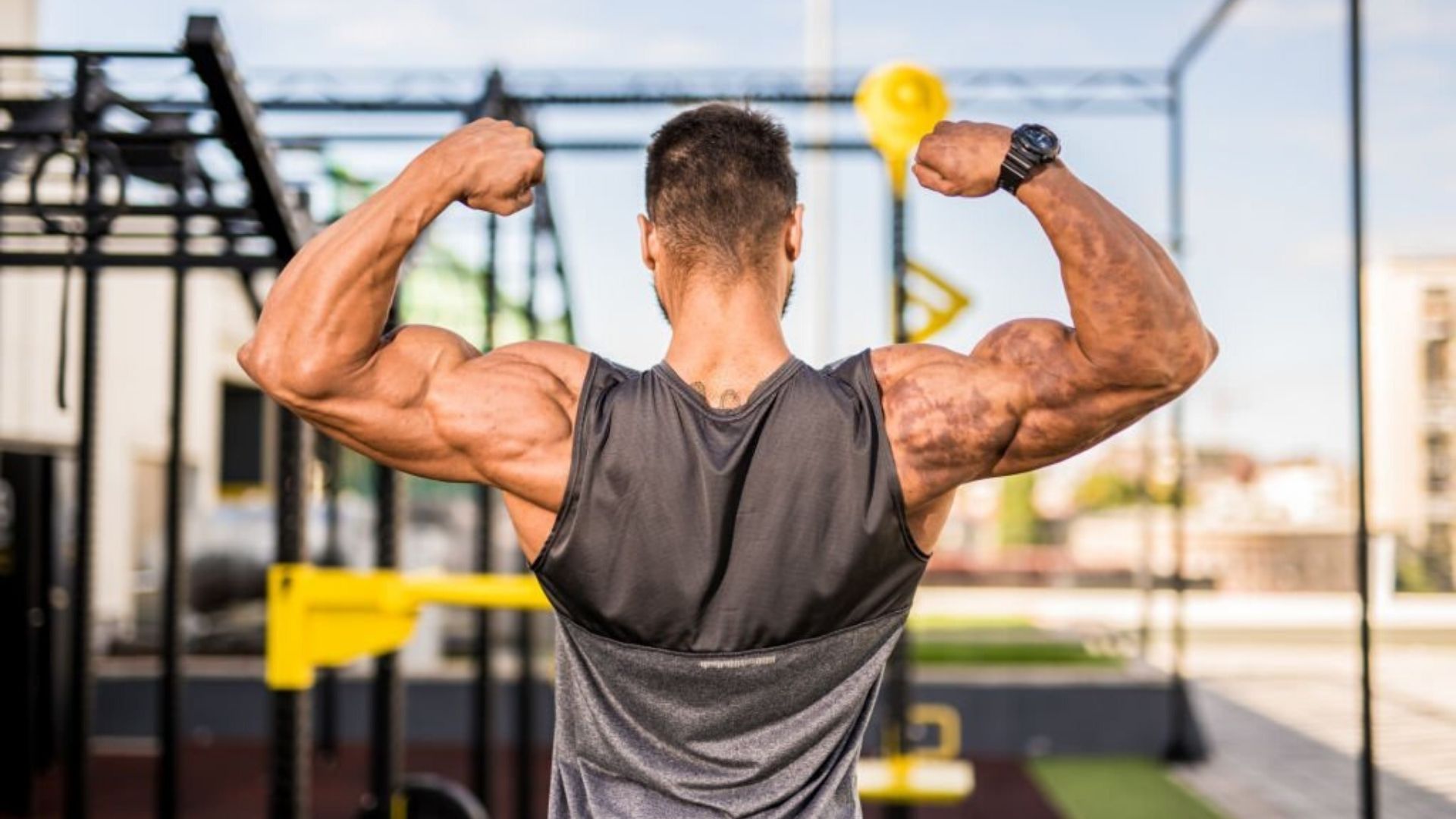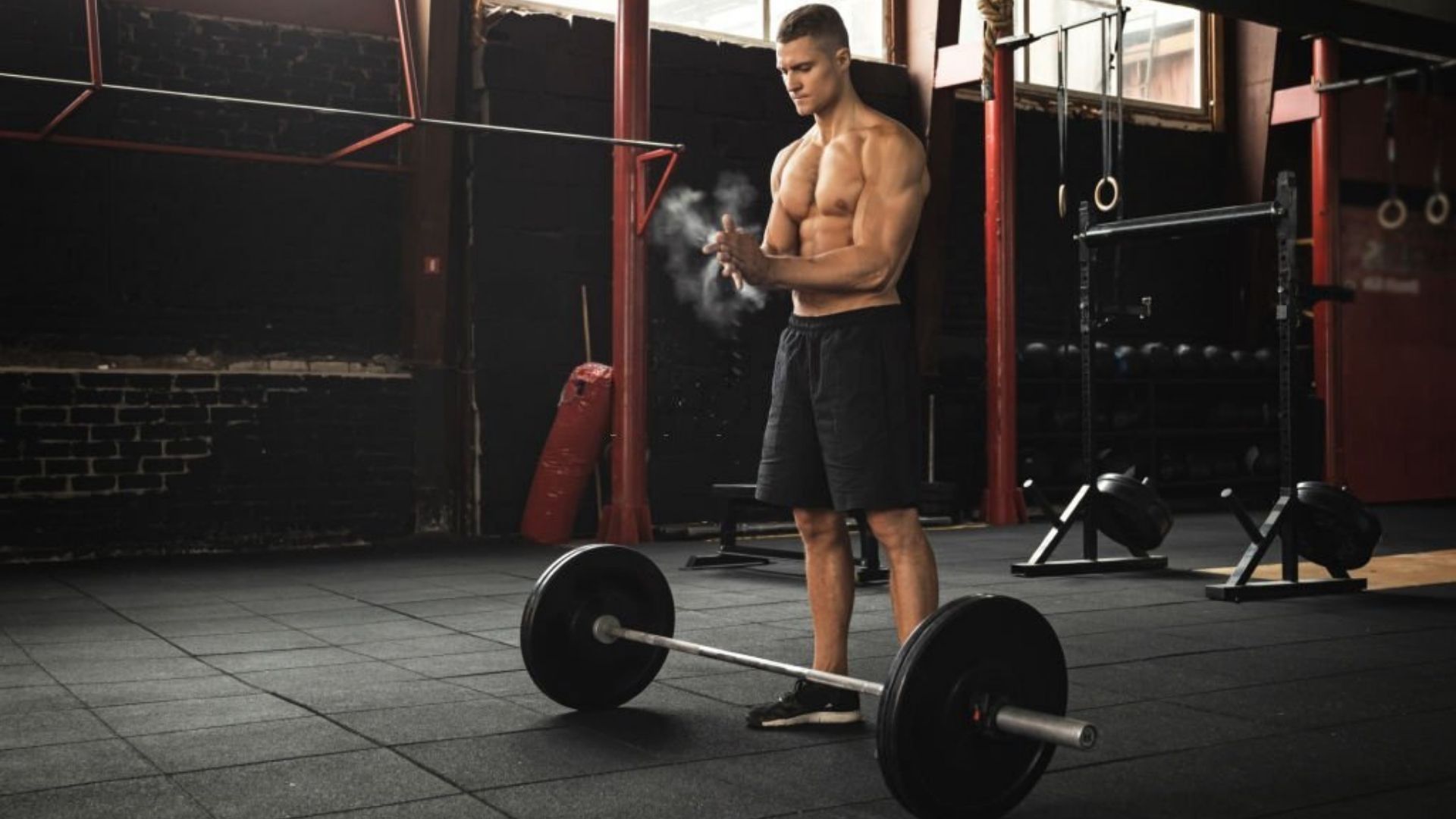
7+ Best Brachialis Exercises for Bigger and Stronger Arms
Most people who exercise would like bigger arms, but some may not admit it! Large arms are essential for bodybuilding; however, most strength athletes, weightlifters, and athletes are proud of their huge arms.
In terms of muscles in the arm are concerned, most people realize that they have to strengthen their biceps and the triceps. They are, after all, the most well-known upper arms muscles. It’s a constant intake of dumbbell, barbell, and cable curls and triceps dips, pushdowns, and bench presses with narrow grips.
But, there’s a second muscle worth your attention to creating the strongest, biggest, and most muscular arms you can imagine, brachialis. This less well-known muscle can contribute to the strength of your upper arms and boost the strength of your arms.
This article will explain what the brachialis can do and the best brachialis exercises for developing it. Also, we have a great brachialis training routine for you to do.
What Is The Brachialis Muscle?

When we consider “elbow flexion,” usually, they imagine the biceps brachii. Although this isn’t entirely true, there are three main muscles involved in elbow flexion. The Biceps aren’t the only flexors.
Brachioradialis
The brachioradialis muscle acts as an elbow flexor located on the posterior side of the lower part of your arm. It’s a “forearm” muscle that connects between the joints of the elbows. It’s not just able to stretch the elbow. However, the brachioradialis muscle can also be a pronator and a supinator while the elbow is bent to 90 degrees.
Biceps Brachii
Biceps are located on the upper part of the arm. In addition to being able to flex the elbow, they also function as a strong supinator.
Brachialis
The brachialis. What are we all here for? We’ll be discussing this for the duration of this piece, and the most significant aspect is that it is only responsible for one task to perform: elbow flexion. Because of this, it’s the most powerful elbow flexor.
The brachialis muscle is a tense muscle that lies under the belly of the brachial biceps. It is located in the upper arm on an anterior aspect. The brachialis’s origin is higher than the middle part of the upper arm. The brachialis insertion lies just a few centimeters above the elbow joint, located on the ulna. If you look at your elbow, it is located within the crook of your elbow joint.
The Biceps Brachii Muscle & Brachialis Muscle Brachialis Function And Anatomy Differences

One of the most effective methods to comprehend why the brachialis is distinctive is to examine it against the well-known biceps. This is where things become fascinating.
Many people think of the biceps as the primary muscle in the body that is used for flexing the elbow. This makes plenty of sense since the most popular posture can be described as the double front bicep, which everybody does by flexing their elbow. It’s also featured throughout every magazine on fitness and Instagram posts (when did you last read an Instagram post about brachialis). Additionally, the biceps can be easy to spot and create huge mounds over the arm’s upper portion. However, most of us (even knowledgeable lifters) suffer from this “out of sight, out of mind” mistake.
In fact, brachialis muscles are the primary mover in elbow the elbow’s flexion. A few studies have revealed that the force created by the brachialis can account for as much as 60% of the force! This means that any elbow movement is greatly impeded by the weakness of the brachialis.
In analyzing the role of the brachial biceps, one will realize that it has many functions aside from elbow flexion. For instance, the biceps can be an extremely powerful supinator used to turn the forearm (turning the forearm until the palm is upwards). In actual fact, this is why it’s more noticeable when flexing the wrist with it turned toward your body (supinated position) instead of to the side (pronation). However, the biceps helps in shoulder forward extension (bringing the arm forward to the front) and arm adduction.
Each of these functions is caused by the biceps crossing three joints. The brachialis, however, crosses only one joint. The brachialis is the only elbow flexor since it is the sole pure flexor and does not perform other tasks apart from flexing the elbow. The thing that seems to be an undisputed fact is that when something is focused on being excellent at a particular task, it is likely to be the most effective. Since the brachialis’ primary task is to stretch the elbow and flex it, it does a great job. It emerges as the strongest elbow flexor found on the body.
Furthermore, the brachialis muscle is a strong elbow flexor when it moves in any direction. Pronated, supinated, neutral…it doesn’t matter. In contrast, the biceps are strong when supination occurs on the forearm but reduce force production quickly when the arm moves from pronation to supination.
Benefits Of Training The Brachialis

Unfortunately, this strong elbow flexor isn’t conditioned to the same extent as the brachialis. Because we are visual beings and tend to reduce our focus on things we cannot see, like the brachialis. It’s foolish to do because training the brachialis is likely to offer several crucial fitness factors. The following are the best advantages of training the brachialis.
Instructing The Brachialis Will Result In Stronger Arms
It’s not possible to be strong without strong brachialis. It’s that simple. The brachialis muscle is responsible for as much as 60 percent of the tension placed on the arm when flexion moves. 60% is an impressive percentage that will significantly impact the strength of your flexion. Also, brachialis could be the difference between success and failure at the fitness center.
If you’re concerned about strength, the brachialis muscles should be the first thing you think about due to their role in producing strength.
A Brachialis That Is Stronger Will Increase Performance
A brachialis that is stronger will provide you with more elbow strength inflection. But that this strength goes far beyond being able to curl further. Training your brachialis can profoundly influence your performance because many sports call for elbow flexion. Here is a brief list of pulling motions that require the strength of your elbow.
- Chin-ups and Pull-ups
- Bent Over Rows
- Dumbbell Rows
- The T-Bar Rows (pronated grip)
The list could go deeper. In essence, any move which requires elbow flexion will get better after training your brachialis.
Training The Brachialis Will Build Bigger Arms
Although you don’t feel the brachialis muscle as it’s located deep beneath the biceps, working out to build muscle hypertrophy is likely to result in bigger arms. How? When you train the brachialis muscle for hypertrophy, you’ll increase the muscle mass. The mass must be moved somewhere, and it’s pushing the biceps forward, which will result in an enlarged, more full arm. Actually, because of the location of the brachialis, a bigger brachialis will have an enormous impact on the size of your arms appear.
The key point is that this simple equation is all you have to keep in mind. Brachialis = Small Arms. Brachialis = small Arms
A More Stronger Brachialis Can Decrease The Risk Of Injury
The elbow joint could be the most vulnerable area for injuries. Many things happen here with multiple joints inside the elbow and many muscles, tendons, and ligaments that ensure it stays together. Additionally, it is one of the joints to consider the force produced through lifting. It’s technically the wrist; however, when performing most activities, it is held in an isometric grip in an extended position. This is because the elbow was the first joint to bend and move to move a weight.
In all likelihood, something can happen if one isn’t vigilant. Although research shows that injuries are common for weight lifting are low, particularly when contrasted with contact sports, there are still instances. In reality, there’s a particular condition called brachialis tendonitis caused by the elbow undergoing multiple strong contractions. The overuse injury may develop over time, causing you to be unable for your elbow to stretch due to the large levels of inflammation of the brachialis and its tendon.
One of the most popular sayings from SET FOR SET is “Strong things don’t fall apart.” If you can increase the strength of your brachialis muscle, you can significantly reduce the risk of having issues. While you’ll still need to rest, strengthening the muscle in conjunction with its tendon will result in an even stronger joint.
Training The Brachialis Will Increase Flexion Strength In The Pronated Pose
One of the areas in which you can see the greatest impact is when your hand is in pronation. This happens when you’re pulling using your palms in the downward direction, and you can clearly observe the back of your hand. Consider exercises such as pull-ups, reverse curls, and inclined rows (pronated grip). While the biceps can be strong supinators. They weaken when the hand is rotated inward because they are in a low biomechanical posture.
The brachialis is essential whenever the arm is moved in any direction since it is not associated with pronation or supination. It’s an all-purpose pony. It’s still superior in the pronation posture, which is an important factor to work on.
The Best 7 Biceps Brachialis Exercises
#1 Cross Arm Curl
This cross-arm curl stretches your brachialis muscles to propel the barbell up.
SETUP
A) Attach the barbell to the form of a landmine attachment or corner. You can secure the top of the bar by placing it on the ground directly in your direction.
B) Take a stand perpendicular to the barbell and keep the feet locked in a relaxed position.
C) Hold the barbell in your left hand with your palm should be facing upwards.
ACTION
A) The left brachialis muscles are contracted to pull the barbell up and over your body.
B) Press your brachialis with all the force at the highest point of the rep. Then slowly return to your starting position.
C) Repeat this movement until you have completed your desired repetitions, and ensure that you change arms.
#2 Dumbbell Hammer Curl
The hammer curl is among the most well-known variants of bicep curl. The hammer grip is designed to target the brachialis muscles to shift the weight in the movement.
SETUP
A) Take a pair of dumbbells, with your palms facing one another.
B) Take a solid standing position, with your spine straight.
ACTION
A) Engage your core and contract your brachialis muscles to lift the dumbbells.
B) Squeeze your brachialis to the maximum of the rep. Slowly lower the dumbbells back to the starting position.
C) Repeat this motion until you reach the desired number of repetitions.
#3 Resistance Band Zottman Curl
The brachialis muscles are stretched when curling upwards, and tension is increased during the banded zottman curl.
SETUP
A) Take the edges of a resistance band (just below the handles) with your palms up.
B) Take a solid standing posture on the band, with the back straight.
ACTION
A) Keeping your back straight, expand your biceps, and raise your hands.
B) Squeeze your biceps with a lot of force at the top, and then twist your hands so that your palms are facing downwards.
C) Slowly lower your hands until they are in the beginning position, and then turn your hands until your palms face in the direction of forward.
D) Repeat this motion until the desired number of repetitions.
#4 1-Arm Kettlebell Curl Reverse
This exercise for the brachialis lets you unilaterally target each arm.
SETUP
A) Take a kettlebell in one hand and the other directed towards you.
B) Take a solid standing position and keep your spine straight.
ACTION
A) Contract your bicep and raise the kettlebell.
B) Squeeze your Bicep to the max of the rep. Slowly return to your starting position.
C) Repeat this motion until you reach the number of reps you want to do.
#5 Reverse Barbell Curl
Also called the overhand cur, the brachialis exercise concentrates on your upper arms and forearms.
SETUP
A) Get a barbell by placing your hands about shoulders apart with your palms facing you.
B) Make sure you are in a stable standing position, with the back in a straight position.
ACTION
A) Contract your Biceps to lift the barbell up.
B) Squeeze your Biceps with your biceps at the top of the rep. Slowly return to your starting position.
C) Repeat this motion until you reach the desired number of repetitions.
#6 Reverse Dumbbell Zottman Curl
A reverse twist like the one zottman does strengthen your brachialis and biceps muscles and other muscles in your forearms.
SETUP
A) Grab a dumbbell with your palms facing your direction.
B) Consider a standing position with your feet approximately an inch apart.
ACTION
A) Keeping your back straight, work your biceps and curl the dumbbells up.
B) Squeeze your biceps with force to the top, and then bend your hands so that your palms are facing forward.
C) Gradually lower the dumbbells slowly to the starting position, then twist your hands to ensure that your palms are in front of your body.
D) Repeat this motion until the number of reps you want to do.
#7 1-Arm Kettlebell Hammer Curl
One-arm curl is a different brachialis-related exercise that will help you correct arm muscle imbalances.
SETUP
A) You can grab a kettlebell using one hand, with your palm facing outwards.
B) Take a solid standing position and keep your spine straight.
ACTION
A) Contract your bicep to raise the kettlebell.
B) Squeeze your Bicep to the max of the rep, and then slowly return to your starting position.
C) Repeat this motion until you reach the number of reps you want to do.
Brachialis Workout
Perform this exercise a couple of times each week instead of your regular biceps exercise. Be assured that your biceps will not shrink simply because you’re focusing on the brachialis muscles since your biceps will also be involved in these exercises. To ensure that you don’t suffer from biceps curly withdrawal, you can do an exercise that you can do regularly towards the conclusion of each program.
Be sure to take just a few minutes before any other exercise. This will boost your efficiency and decrease the chance of injuries. A couple of cardio minutes will suffice, followed by some joint mobility exercises and stretching exercises.
Last Words

It’s sometimes surprising how significant tiny muscles are. It’s hard to see your transverse abdominis, the rotator cuff, or brachialis muscles. Still, in their own ways, each is a key component in the appearance of your body and how you perform.
In most instances, the superficial muscles are directly involved in the routines that you’re already doing. However, sometimes it’s worth shining their spotlight and paying them some focus.
Utilize the workouts and exercises included in the article below to rev up your brachialis muscles and increase the size of your upper arm and strength.











